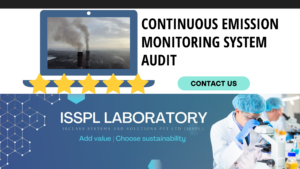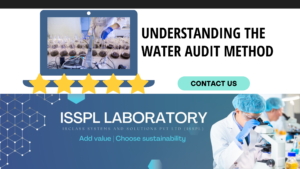An Overview by Team ISSPL - Analytical Testing Laboratory in India
ToggleMining is an integral economic activity. It is an industrial operation carried out across the globe. Mining is common for all and in an industrialized society, it is a significant aspect. But there is more than one undeniable negative impact of mining on the environment. Water pollution is a critical side effect of the mining operations.
Many do not have an overview of the adverse impact of mining on water. However, those associated with the activity can recognize the diverse environmental threats related to mining. The process of mining impacts the waterways, from rivers, lakes, and other sources of drinking water. One cannot ignore the essentiality of controlling the contamination.
Why? Water is vital for survival and the world needs fresh and potable water. The diverse activities of mining can deteriorate water quality and quantity to the next level. Testing the water can help the process but you need expert assistance to accomplish the process.
Adverse impact of mining
Mining activity is associated with chemical extraction from ores. What is an ore? It is a mineralized rock. An ore contains a valued metal. It can be – gold, copper, or other minerals like coal. Open-pit mining helps the process of excavating large quantities of waste rock. The material without the target mineral may not yield the desired mineral ore, but the adverse impacts remain the same.
The process followed by the experts to ease the worries related to ore extraction is complicated. But you can resolve the process by facilitating the testing awareness among all. The ore gets crushed into finely ground tailings. It is critical for processing the grounded ore with various chemicals. The separating process is the end step, critical to extracting the final product. The negative impacts of ore extraction can vary at large. The pollution may be from the sedimentation and disturbance of water during my development.
Water pollution from mine rocks and ores requires optimal management. The mining pollution impacts depend on various aspects like – the sensitivity of local terrain, the chemical composition of minerals, professional skill, knowledge, etc.
Types of water pollution from mining –
There are four types of waterborne pollution that get boosted due to mining activities. Know them rightly to make the best call –
1. Acid mine drainage
Acid Rock Drainage, or ARD, is a natural method. It creates natural sulphuric acid, and these sulfides in the rocks get exposed to air and water. Acid Mine Drainage, or AMD is a process involving large quantities of rock with sulfide minerals. These minerals get excavated from an open pit or an underground mine. The mineral reacts instantly with water and oxygen and creates sulphuric acid. The development of acid impacts the well-being of all.
The water reaches a certain acidic level. It boosts the growth of a naturally occurring type of bacteria, Thiobacillus ferroxidase may kick in. Using the acid water is toxic, and thus, it is critical for them to manage the oxidized water. The source rock gets exposed to air and the waterways are different, making it significant to review the toxicity level.
2. Heavy metal contamination and leaching
Heavy metal pollution can be generated from the extraction phase. The heavy metals may be arsenic, cobalt, copper, cadmium, lead, silver, and zinc. The excavated rock can encounter water. The worries of heavy metal contamination are not restricted to the younger generation. It assures a wholesome solution for all without the hassles related to mining management.
3. Processing the chemical pollution
Air and water pollution due to the increased presence of chemicals can become a critical concern at any time. Unfortunately, the timing of the chemical water pollution from the mine water is not easily detectable. During such times, checking the water quality index can benefit the process to the next level, easing the requirements. Staying proactive with the pollution-beating steps is the ideal approach all industrialists must follow.
4. Erosion and sedimentation
Mining the ores and rocks involves removing soil from the earth’s surface and scraping the rocks to get the coal buried. All these activities happen near the surface and lead to the destruction of crop fields and soil beds. It is called soil erosion due to artificial activities. Plants, trees, creepers, and topsoil get scraped away from the entire mining area. It also destroys wildlife habitats and green landscapes.
If and ever these mining sites experience heavy rain, the loosened and eroded topsoil gets severely damaged. It gets washed away, carrying the residual components with soil and chemicals to pollute the streams, lakes, and rivers. Excessive residue is toxic for aquatic organisms because it gets mixed with water and goes downstream, reaching the marine world. It can also lead to the disfiguration of streams and river channels, resulting in flooding.
The ideal steps for prevention
Acid mine drainage is a watershed problem and a critical matter. The problems are crucial and create severe health risks. Following are some of the effective ways to combat the potential risks –
- Follow preventive steps to combat future loss of aquatic habitat for acid drainage.
- Focus on inventory cleanup to reduce the acid-generating mine sites.
- Create awareness and ensure public access to information related to toxicity monitoring.
- Focus on the norms related to enforcement of AMD treatment and recovery.
- Follow measures to prevent future AMD and enhance the steps to environmental risk assessment by following a liability prevention approach.
Closing note – Stay proactive and realize the need to be careful
Mining and extracting ores are critical industrial activities. These are unavoidable. But that does not imply the pollution generated by these industrial activities is also unavoidable.
Recognize the need to manage the toxins draining in the water sources. It can have negative consequences if the management is not up to the mark. The incorrect disposal of polluted water can impact the environment and create legal troubles for an industry. Avoid the hefty fines and focus on resisting the irreparable harm to a company’s reputation. Maintain a proactive approach and eliminate the worries.







